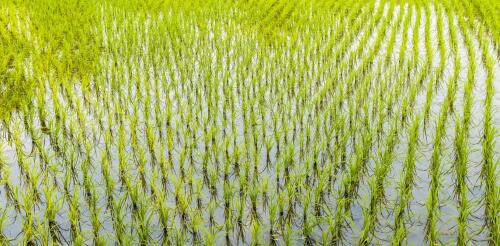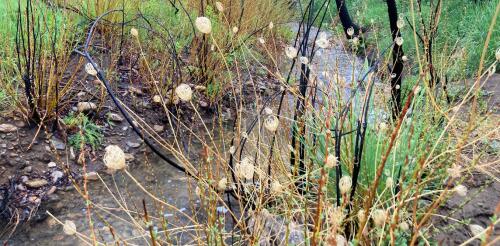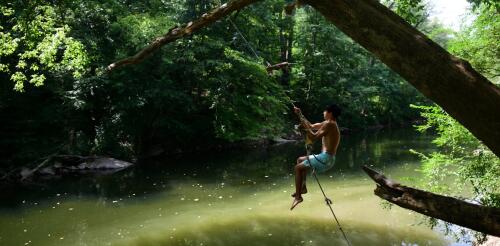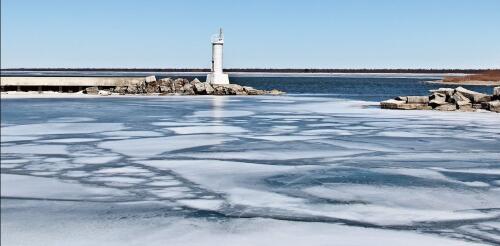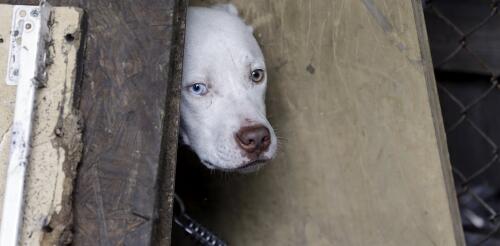Local
Each summer, nearly 25,000 acres (10,000 hectares) of rice is cultivated in the Florida Everglades Agricultural Area, a roughly 1,100-square-mile (2,800-square-kilometer) area south of Lake Okeechobee. Farming here requires a delicate touch. The area has lost nearly 6 feet (1.8 meters) of soil in the past century through a process called subsidence. One way to slow down this subsidence and preserve the nutrient-rich soil is to flood the area during Florida’s rainy season and use the fields to grow rice. The fields are flooded using water from adjacent canals. Once the water dries up or seeps away, the rice is harvested. The Conversation asked Associate professor Jehangir Bhadha, an expert in soil sustainability at the University of Florida, how the university got involved with growing rice and what environmental benefits it’s produced. What is the history behind growing rice in the Everglades? Rice was grown in the Everglades Agricultural Area for a brief period...
A tiny, vibrant world thrives along the rocky bottom of most streams. As sunlight filters through the water, mayfly nymphs, no larger than your fingernail, cling to algae-coated cobbles. Their brushlike mouthparts scrape the greenish coating, leaving faint trails as they feed. Six spindly legs anchor them against the current, while feathery gills wave gently, drawing oxygen from the flowing water. This scene is common in well-maintained creeks and streams that flow through populated areas. But when wildfires sweep through, the toxic materials left behind can devastate this ecosystem. When you think of urban wildfires, you might picture charred trees and houses. But beneath the surface of nearby streams, fires can also cause a silent upheaval – one that affects populations of creatures that are important indicators of the water’s health. Images of some of the benthic invertebrates that help keep streams healthy, and whose disa...
Spanning 2,000 acres with more than 50 miles of trails, Wissahickon Valley Park in northwest Philadelphia offers a variety of recreational opportunities, from hiking and biking to bird watching and picnicking. We are a professor of history who co-authored a book on the Wissahickon Valley and an assistant professor of biology. We teach students at Chestnut Hill College, which sits directly across the street from this lush urban park, about the environmental history of the Wissahickon forest and the importance of preserving its biodiversity. We’re also developing a documentary on the Wissahickon funded by the Sisters of Saint Joseph. We want our students – and all Philadelphians – to understand the importance of protecting this urban ecosystem as a way to build climate resilience. Like many of the country’s other great urban parks – from Central Park in New York or Rock Creek Park in Washington to the smaller Phalen Park in St. Paul, Minnesota R...
Winters on the Great Lakes are harsh – so much so that the scientists who work there often focus on the summer months, when tiny microbes at the base of the food chain were thought to be most productive. However, emerging research is changing our understanding of these winter ecosystems and shining a light on a vibrant world of winter activity just below the ice. Scientists discovered in the early 2000s that communities of diatoms – tiny photosynthesizing algae – were thriving in the light under the wind-swept lake ice. But, it turns out, that was only part of the story. As the Great Lakes’ winter ice disappears – it hit record lows in the winter of 2023-24 – new analyses show that some diatoms appear to have a different way to create energy and survive in the dark, turbid ice-free water until summer. A thin slice of Lake Erie ice collected by a scientist has diatom algae growing on the bottom....
Nearly two-thirds of U.S. households have at least one pet. More than ever before, companion animals are a part of life – particularly in cities, where the majority of Americans live. Cities offer access to many resources, but often it’s not distributed evenly. Some scholars describe parts of U.S. cities with few or no grocery stores as food deserts. Others have identified zones they call transit deserts, where reliable and convenient public transit is scarce or nonexistent. While the “desert” framing is controversial, there is little disagreement that access to goods and services in many U.S. cities is unequal. I have studied urban animal welfare issues for the past 15 years, and I have found that the inequities and economic stress humans face affect animals as well. Recently, University of Nebraska geographer Xiaomeng Li and I explored access to animal welfare services in Detroit. We found that pet resources were significantly more likely to be loca...
